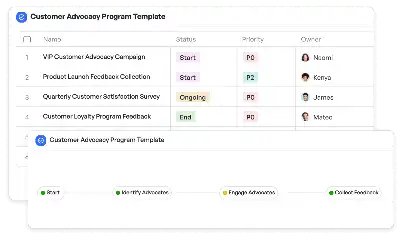Model Serving Load Balancing Strategy
Achieve project success with the Model Serving Load Balancing Strategy today!

What is Model Serving Load Balancing Strategy?
Model Serving Load Balancing Strategy is a critical approach in managing the distribution of computational resources for serving machine learning models. In the context of AI and machine learning, this strategy ensures that models are efficiently deployed across servers, minimizing latency and maximizing throughput. For instance, when a predictive model is used in real-time applications like fraud detection or recommendation systems, the load balancing strategy ensures that the model's requests are evenly distributed across available resources. This prevents server overload and ensures consistent performance. The importance of this strategy lies in its ability to handle dynamic workloads, adapt to varying traffic patterns, and optimize resource utilization, making it indispensable in modern AI-driven industries.
Try this template now
Who is this Model Serving Load Balancing Strategy Template for?
This template is designed for data scientists, machine learning engineers, and IT operations teams who manage AI model deployments. Typical roles include DevOps engineers responsible for infrastructure scaling, AI researchers optimizing model performance, and product managers overseeing AI-driven applications. For example, a machine learning engineer deploying a recommendation system for an e-commerce platform would benefit from this template to ensure seamless user experience during peak shopping seasons. Similarly, IT teams managing cloud-based AI services can use this strategy to optimize costs and performance.

Try this template now
Why use this Model Serving Load Balancing Strategy?
The Model Serving Load Balancing Strategy addresses specific challenges such as uneven resource utilization, high latency during peak loads, and inefficient scaling of AI models. By implementing this strategy, teams can ensure that computational resources are dynamically allocated based on real-time demand, reducing the risk of server crashes and improving response times. For instance, in a scenario where a machine learning model predicts stock prices, the strategy ensures that the model can handle sudden spikes in user requests during market hours. Additionally, it provides a framework for monitoring and optimizing model performance, ensuring that AI applications remain reliable and cost-effective.

Try this template now
Get Started with the Model Serving Load Balancing Strategy
Follow these simple steps to get started with Meegle templates:
1. Click 'Get this Free Template Now' to sign up for Meegle.
2. After signing up, you will be redirected to the Model Serving Load Balancing Strategy. Click 'Use this Template' to create a version of this template in your workspace.
3. Customize the workflow and fields of the template to suit your specific needs.
4. Start using the template and experience the full potential of Meegle!
Try this template now
Free forever for teams up to 20!
The world’s #1 visualized project management tool
Powered by the next gen visual workflow engine




